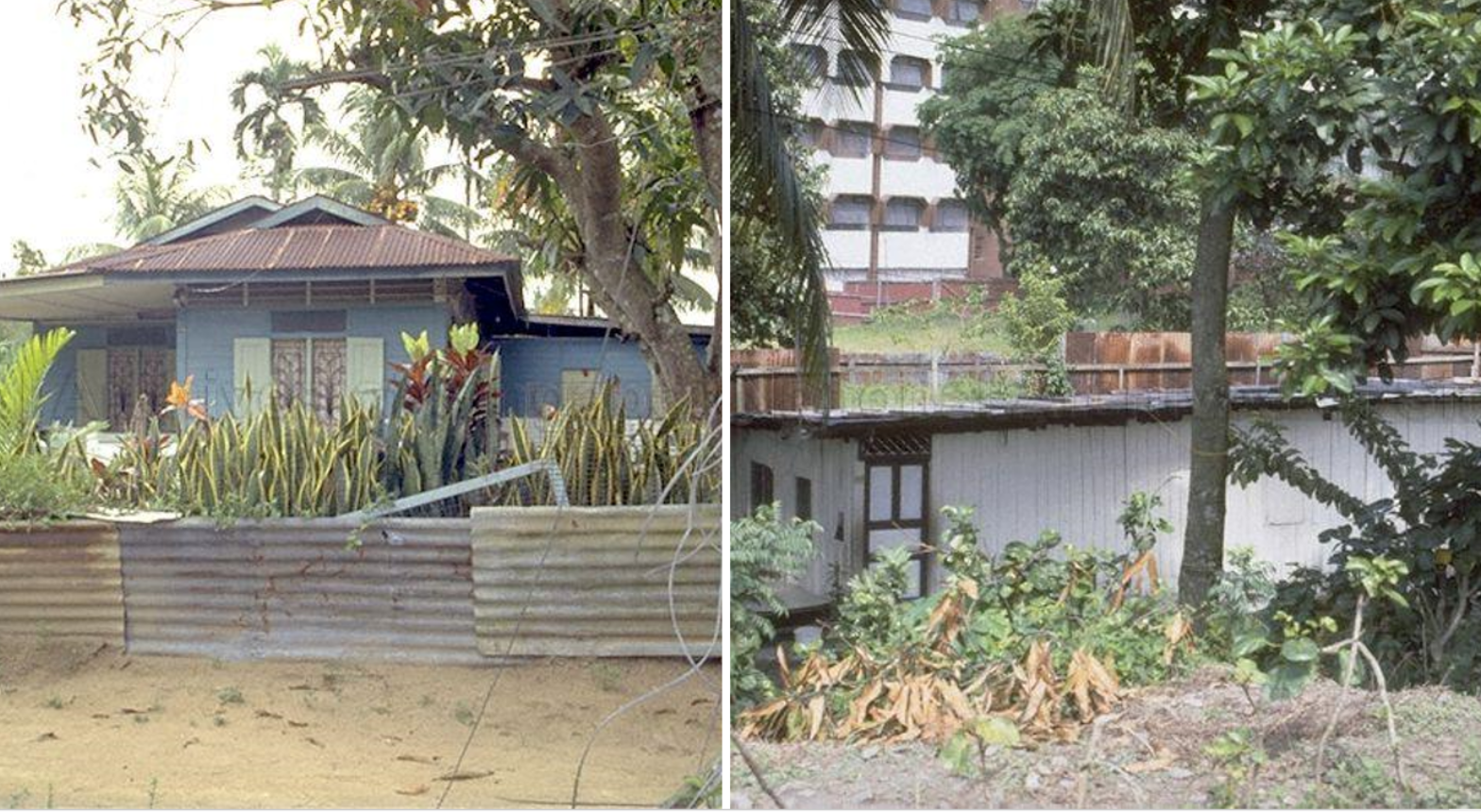Bukit Timah, widely considered an upscale district in Singapore today, was once home to humble kampongs.
But they were cleared out by the 1980s, when the authorities notified landowners they had to redevelop their wooden houses into proper houses according to building standards of the day.
Many villagers eventually moved out because of this.
With urban development, much of Bukit Timah's kampong past has slowly been forgotten.
And chances are, if you didn't grow up there from the 1950s to 1970s, you would never have heard of Kampong Chamar, Kampong Quarry or Kampong Coronation.
Kampong past
While many of these villagers have moved into high-rise flats, one of the oldest residential estates in Bukit Timah can still be explored today.
Nestled behind Rail Mall, Fuyong estate was built in the 1950s by philanthropist Lee Kong Chian to provide affordable modern housing during Singapore’s housing shortage.
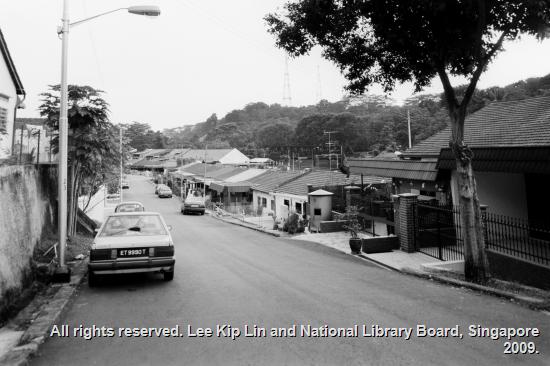 Jalan Asas in 1992. Photo from the Lee Kip Lin Collection, National Library Board (2009).
Jalan Asas in 1992. Photo from the Lee Kip Lin Collection, National Library Board (2009).
Currently, the Fuyong estate residents remain a close-knit community.
In 2009, a group of them got together to try to secure a longer lease for the neighbourhood, as the lease for Fuyong estate was due to expire in 2046.
It was also reported that the group has also extended help to families in the area who needed assistance.
Cross-cultural landmarks that still exist
Even though some of these kampongs have largely disappeared from our urban environment, some tangible structures within that area remain.
For instance, religious buildings that were once central to the community life of villagers in the past now continue to serve residents in the vicinity.
These structures are testament to the multicultural past of Bukit Timah’s kampong life.
Masjid Al-Huda
Masjid Al-Huda, which was built in 1925, served as an important place of worship for Muslim villagers.
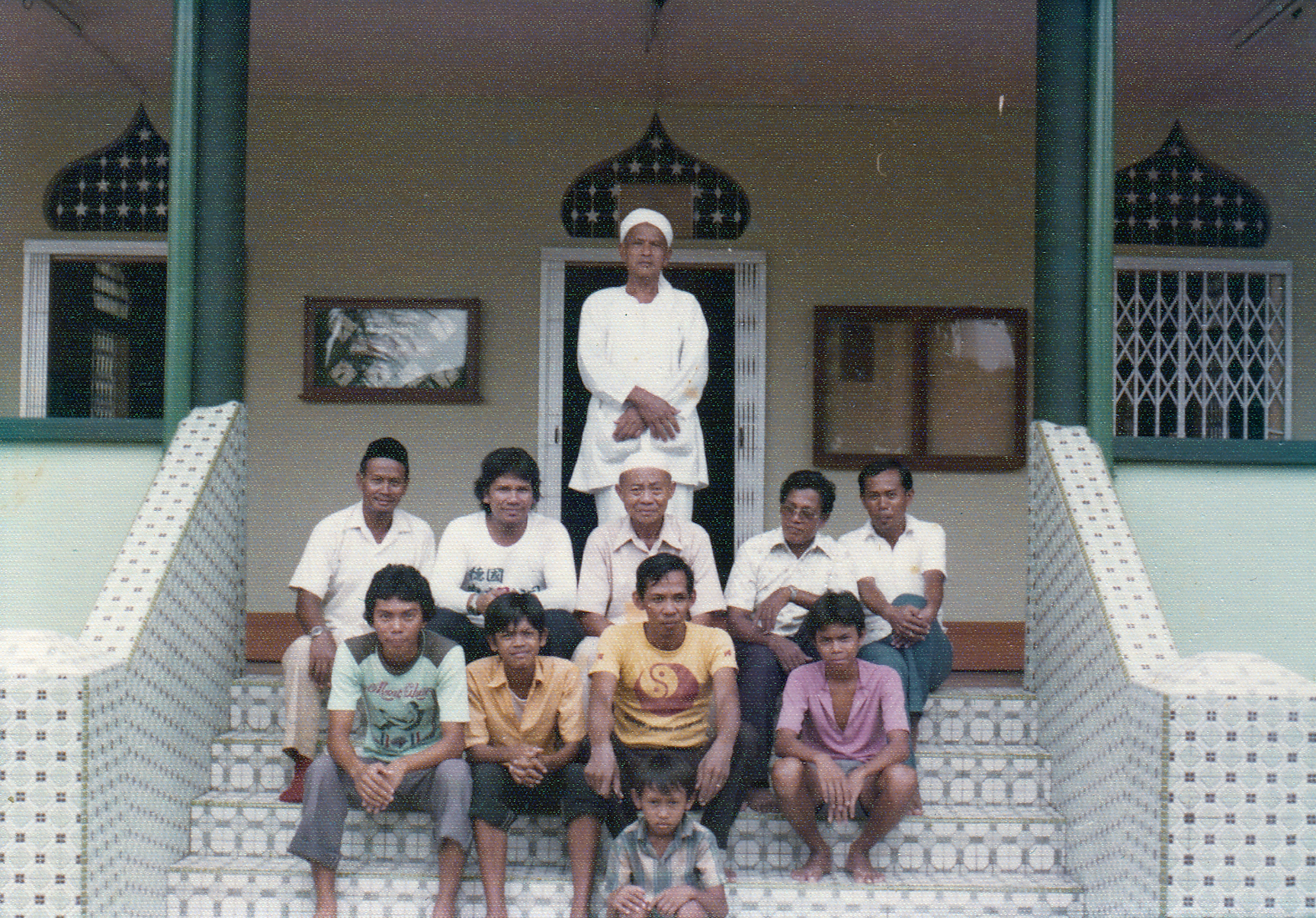 Masjid Al-Huda's volunteers and members in the 1990s. Photo courtesy of Masjid Al-Huda.
Masjid Al-Huda's volunteers and members in the 1990s. Photo courtesy of Masjid Al-Huda.
The mosque, with its multi-tiered roof, bears resemblance to the styles of traditional Javanese mosques as most of the mosque’s trustees hailed from a Javanese heritage.
It used to be part of Kampong Tempe, which received its name and was made famous in Singapore during those days for the fermented soybean cake (known as tempe) that was produced in the village.
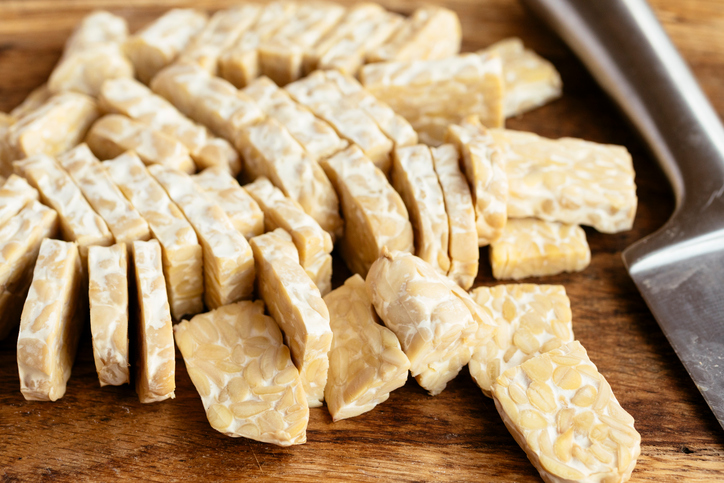 Tempe. Photo by Harald Walker, via Getty Images.
Tempe. Photo by Harald Walker, via Getty Images.
Kampong Tempe was located between Sixth Avenue and Coronation Road West.
In the 1960s, the Muslim community in the area, including those living around Jalan Haji Alias, Jalan Siantan and Jalan Lim Tai See, raised funds for a new mosque to be built in brick and concrete.
The mosque still exists today and is located along Jalan Haji Alias.
Hoon San Temple
Another place of worship that has withstood the test of time can be found at Jalan Lim Tai See.
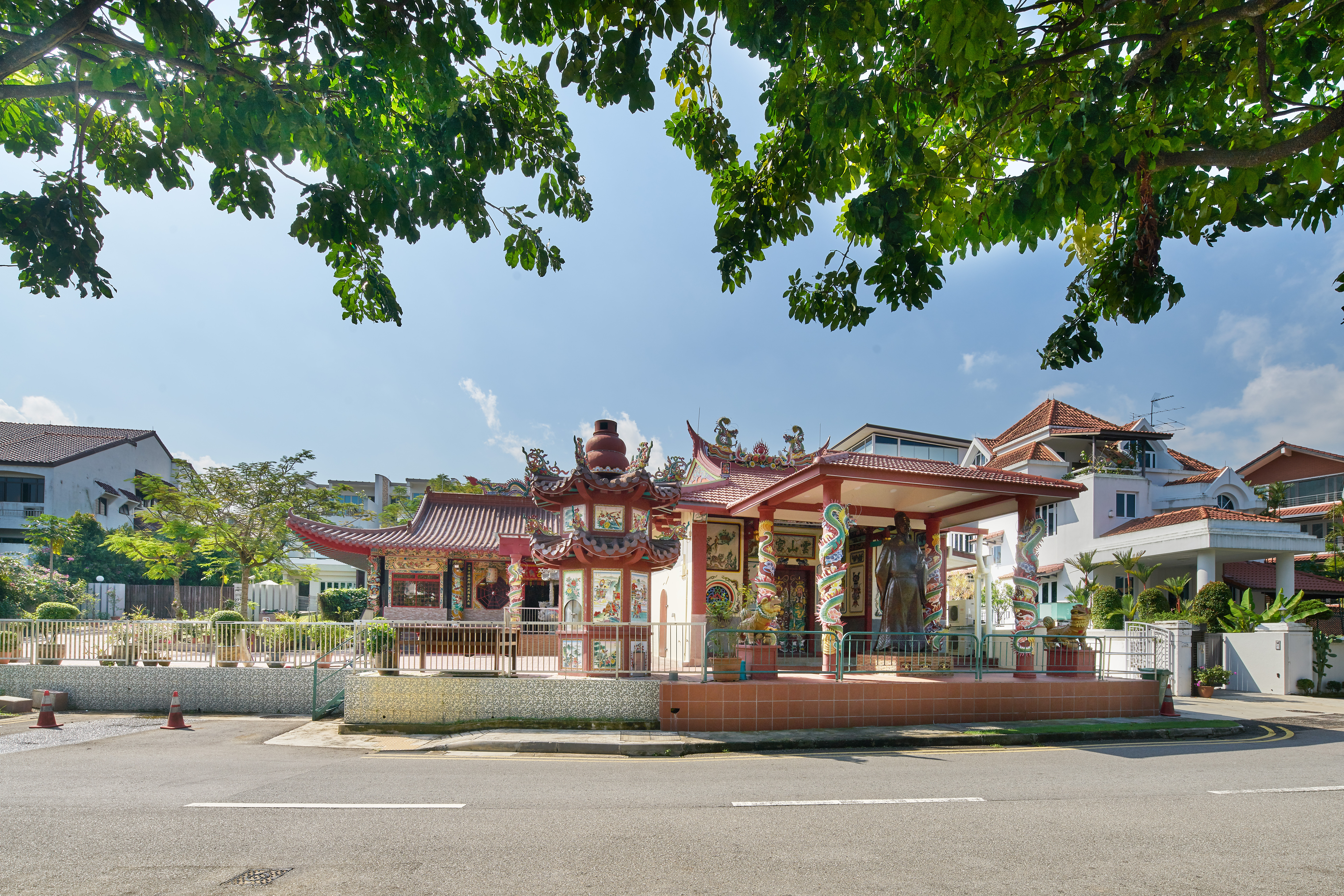 Hoon San Temple. Photo courtesy of National Heritage Board.
Hoon San Temple. Photo courtesy of National Heritage Board.
Hoon San Temple, which is located just one street away from the mosque, was built in 1902 by immigrants from Fujian, China.
This temple is dedicated to a Hokkien deity, Lim Tai See, after whom the road is also named.
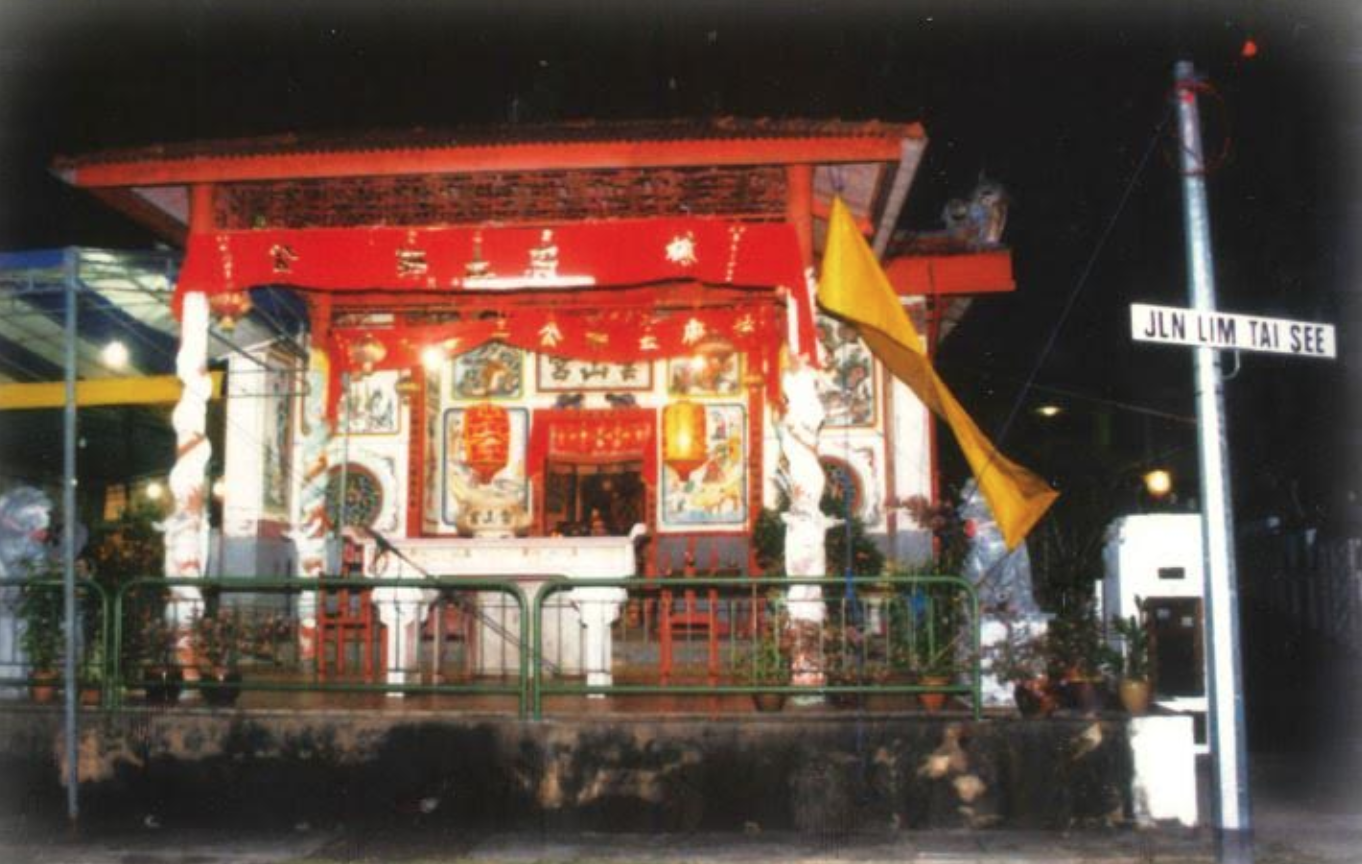 Photo courtesy of Hoon San Temple, 1998.
Photo courtesy of Hoon San Temple, 1998.
The temple features interlocking wooden beams which were constructed in the Hokkien style, as well as intricate frescos and murals with the filial piety theme.
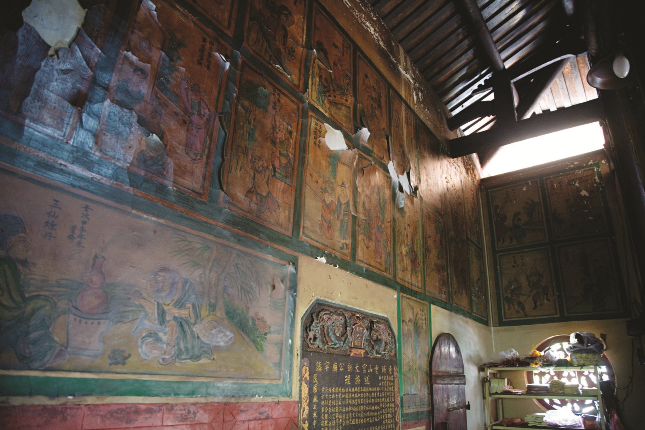 Photo from Roots.sg
Photo from Roots.sg
During the 1950s and 1960s, performances were held regularly on a stage near the temple and drew crowds of spectators from nearby villages.
Spectators included Malay residents from the neighbouring Kampong Tempe who enjoyed the performances despite differences in culture and language.
Today, the temple is located in the midst of a row of bungalow homes. The rural kampong that the temple used to serve has since been resettled.
[related_story]
Explore more on this trail
These religious sites are part of the National Heritage Board's "Kampong Life Trail," which takes approximately one hour to complete by bus and on foot.
Landmarks on this trail include the former Bukit Timah Railway Station, Masjid Al-Huda and Hoon San Temple.
The more adventurous can also explore Fuyong estate as well, which is located further up along Upper Bukit Timah Road.
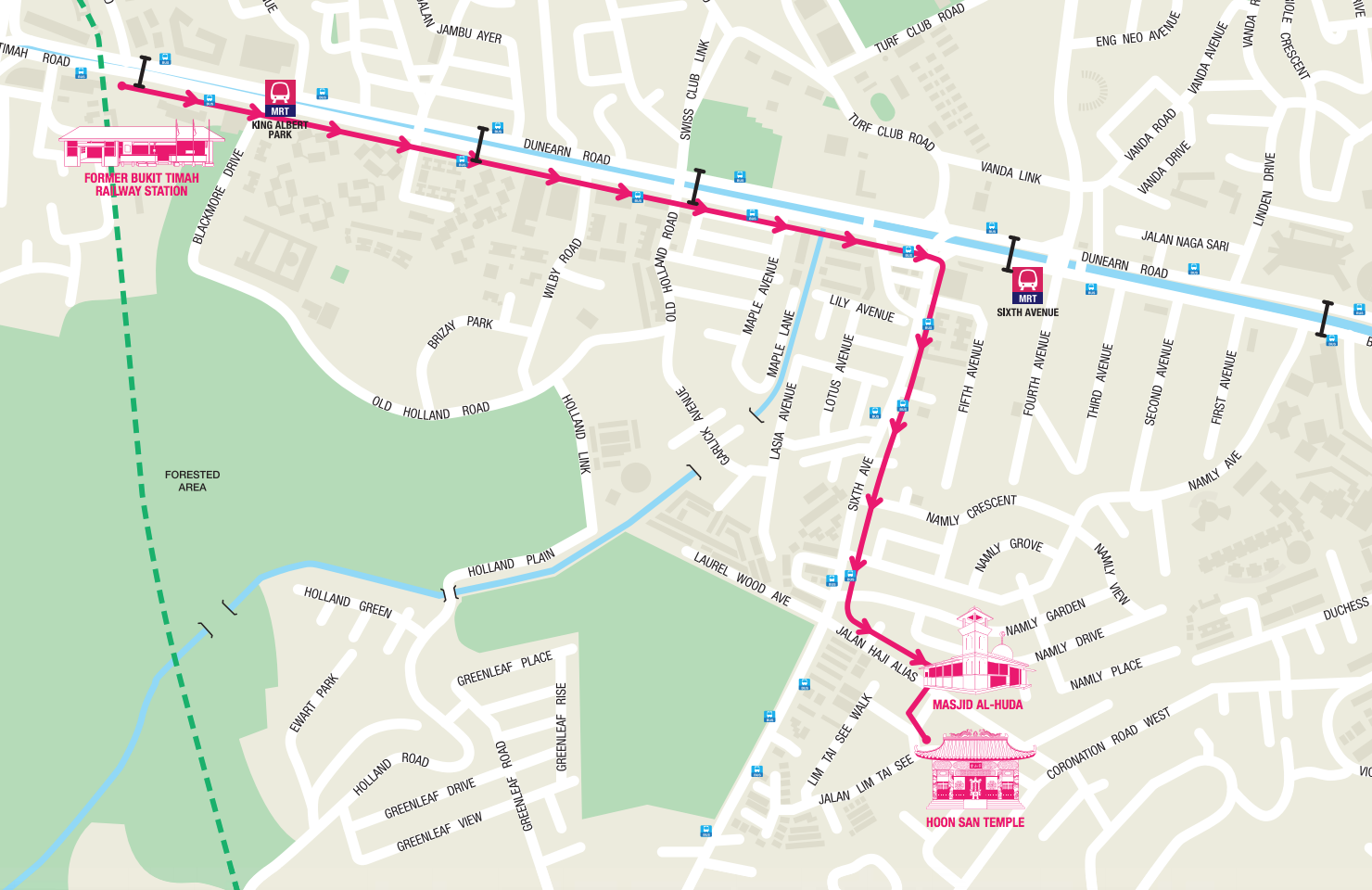 Screenshot from map by National Heritage Board.
Screenshot from map by National Heritage Board.
In total, there are three heritage trails for members of the public to explore: Leisure and Learning, WWII Legacy, and Kampong Life.
Covering different segments along Bukit Timah Road, each thematic trail explores the buildings, structures, religious institutions, communal spaces and sites of natural heritage that make up the area’s rich and varied history.
You can find out more about the trail from this video:
&feature=youtu.be
Top photo composite image from NAS.
If you like what you read, follow us on Facebook, Instagram, Twitter and Telegram to get the latest updates.
